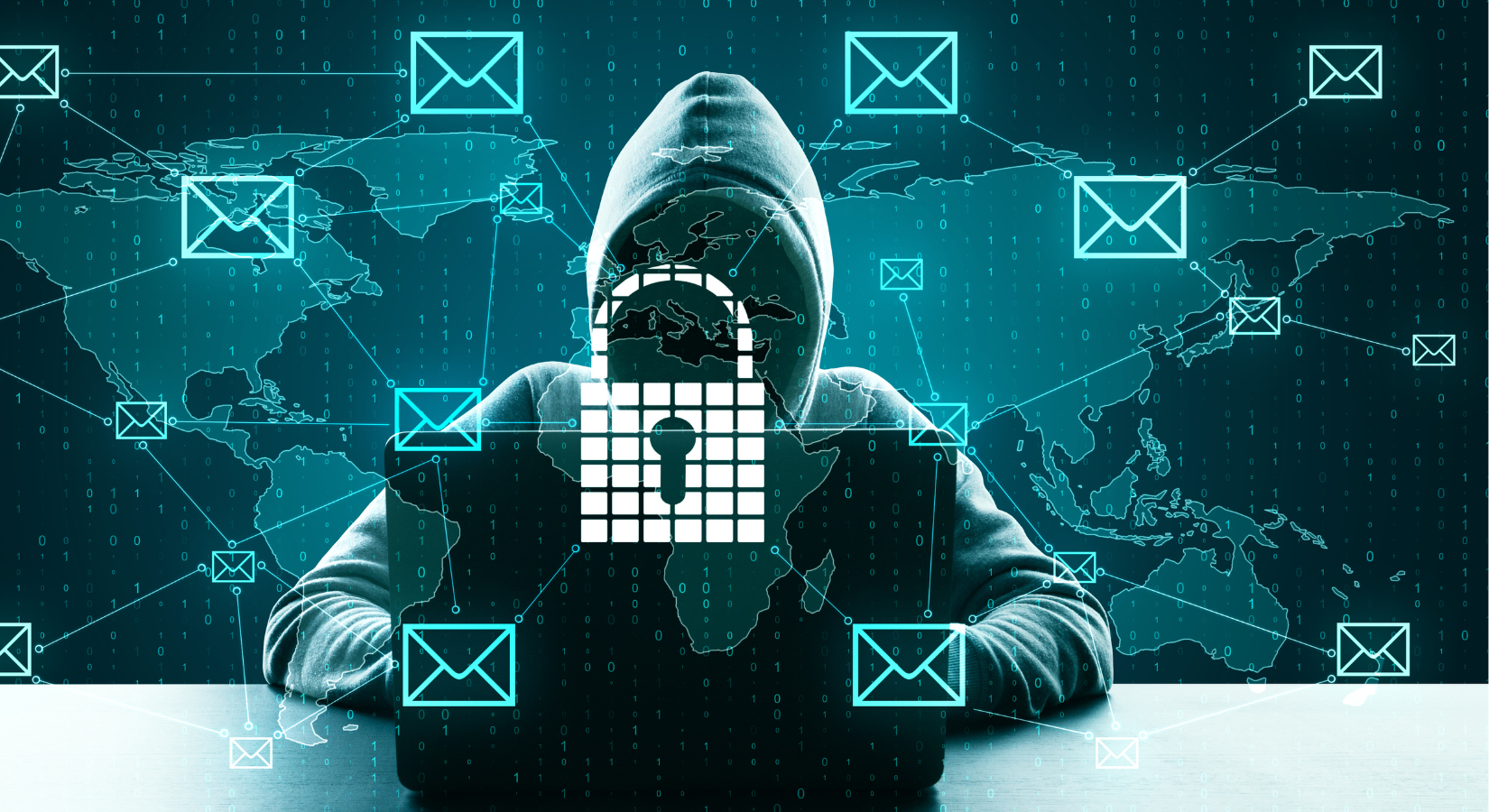In today’s digital era, ransomware attacks pose a significant and persistent threat to businesses. These attacks are among the foremost concerns in cybersecurity, and their frequency and impact have increased dramatically in recent years. It is vital for businesses to comprehend the nature of these threats and how to safeguard against them, particularly for middle-market, closely held, and family-owned companies, which are increasingly targeted. Cybercriminals often perceive these businesses as having weaker security measures and limited IT resources, making them seemingly easier targets than larger enterprises.
An attack can result in substantial financial loss and even cripple business operations, with potential irreparable reputational damage well after the fact. Cyberattacks create data breaches, and the average cost of a data breach is estimated to be around $1.85 million, which includes the cost of investigating the breach, notifying customers, and implementing security measures to prevent future breaches. For many smaller companies, a successful cyberattack may even put them out of business.
Is your data valuable?
It is to you, and that is all that matters. While we aren’t cybersecurity experts, we will explain ransomware, how it works, why it’s a growing threat, and steps you can take to prevent your business from becoming a victim.
Ransomware is malware that encrypts business data, locks you out of your system, or denies access to your files until a ransom is paid. To many companies, data is the lifeblood of operations and represents essential information that may never be reproduced again. Ransomware attacks feed off this, and the rising prevalence is a serious threat to all businesses.
Consider the attack on a major city’s public health system, where ransomware impedes vital services and demands a hefty ransom. This demonstrates how fragile data security can create widespread disruption.
As for its impact on businesses, ransomware can take operations to a complete standstill, leading to extended downtime. Clients and customers may lose confidence in a business’s ability to protect their data, leading to a potential loss of business. When it comes to cost, the recovery price involves paying off the ransom and other processes, such as data recovery and patching up the systems. The intrinsic value of your data is immense — its loss can affect everything from business continuity to regulatory compliance.
Common Cybersecurity Threats Facing Businesses
Awareness, staying educated on how ransomware finds its way into the system, and thinking before you click are good first steps in its prevention. Ransomware typically enters a system through malicious email attachments, clicking on suspicious links in emails (phishing), or exploiting vulnerabilities in software, often by tricking users into opening attachments or clicking links that appear legitimate but contain malicious code.
Here is an overview of some common threats:
- Phishing Tactics: Cybercriminals often use phishing emails to trick employees into downloading ransomware. These emails appear legitimate but contain malicious links or attachments. According to the USA Homeland Threat Assessment 2024, e-mail hacking schemes remain one of the costliest cybercrime activities, with losses totaling over $2.7 billion in 2022, and the average business experiences a recovery period of 22 days before resuming operations following a ransomware attack, which frequently costs 50 times more than the ransom demand.
- Poor Password Management: Weak or reused passwords can provide unauthorized access to sensitive systems, making it easier for ransomware to spread.
- Personal Endpoints: The increased use of personal devices for business purposes can create vulnerabilities, especially if these devices lack proper security measures. According to a recent study, almost 70 percent of IT decision-makers in U.S. companies approve of Bring Your Own Device (BYOD), and more than 50 percent of employees are not given instructions.
- Outdated Software: Failing to update your software doesn’t just mean you’re missing out on the latest version—it means you could expose your organization to significant security vulnerabilities that ransomware can exploit to gain access.
- Employee Risk: It’s not enough to have a ransomware response plan; you need to share it with your employees. Whether intentional or accidental, employees can inadvertently facilitate ransomware attacks through poor security practices.
Building a Strong Defense Against Ransomware
Traditional disaster recovery plans aren’t always enough. They struggle to effectively address the nuanced threats and complexities cyberattacks pose, so having a dedicated ransomware response plan backed by specialized tools, personnel, and frequent testing is vital to protecting your business.
As cybercriminals grow more and more sophisticated, the necessity for businesses to develop a robust ransomware defense strategy has never been greater, and here are a few strategies you can take to defend against ransomware:
- Cybersecurity Policies: Establish the right cybersecurity policies and enforce them accordingly. Train employees in best practices, such as identifying and reporting possible phishing attempts and managing passwords according to organizational policies.
- Immutable Data Backup: An immutable data backup is a copy of data that cannot be altered or deleted for a set period and is a key component of a strong data protection strategy. This type of backup prevents ransomware from encrypting or deleting data. It also helps businesses meet regulatory compliance by providing a verifiable and unalterable data record. This reduces the impact of a ransomware attack by enabling you to restore your data without paying the ransom.
- Multi-Factor Authentication (MFA): This security process requires users to provide more than just a password to log in to an account. Implementing MFA adds an extra layer of protection for accessing sensitive systems and data.
- Cybersecurity Insurance: Cybersecurity insurance can cover data breach costs, cyber extortion, business interruption, data recovery, and privacy protection, so obtaining cybersecurity insurance to mitigate potential financial losses from ransomware attacks is worth the investment.
- Device and Network Security: Network security includes using rules, techniques, and other security controls, such as Virtual Private Networks (VPNs) and Zero-trust network access, which restricts critical data to approved users. These robust security measures will help safeguard crucial computer networks and their sensitive data, preventing unauthorized access.
- Network Monitoring: IT networks are the backbone of nearly every business, and if your network isn’t protected, you’re putting your business at risk. There are different monitoring tools, including cloud infrastructure and security monitoring. Utilizing network monitoring tools lets you detect and respond to suspicious activities in real time.
Responding to a Ransomware Attack
If your business is a victim of ransomware, it’s crucial to act swiftly. Here are a few recommended steps to help mitigate the risk and spread of the attack.
- Don’t pay the ransom because there’s no guarantee the cybercriminal will unlock your files when they’re paid off.
- Find the source by reaching out to all your employees to ascertain who experienced the first signs of the attack and when it occurred. For example, did they click on a link in an email? Was there an unusual prompt coming from a web browser?
- Record the details of the attack, including what type of ransomware hit you and how you are to pay the ransom. You can do this by taking a photo of the ransom note on your screen with your phone.
- Turn off all devices and disconnect affected systems from the network to help prevent ransomware spread.
- Report the incident to law enforcement and relevant authorities for guidance and potential legal action. Know what to expect legally in a ransomware attack, such as reporting a data breach or possible fines. Ensure you have documented policies and procedures for responding to cyber incidents and provide clear guidance during a crisis.
Ongoing Monitoring and Risk Management
Preventing future attacks requires continuous vigilance, including maintaining ongoing systems monitoring to detect and respond to threats as they arise and conducting regular audits to help identify and address potential vulnerabilities in your security infrastructure. It’s also important to educate, train, and audit your employees to ensure they understand how to help protect your business from falling victim.
We aren’t cybersecurity experts, but we are seeing an increasing number of middle-market businesses affected by cyber-related incidents. As these cyberattacks continue to worsen, we believe the need for proper cybersecurity measures has never been more pressing and should be a component of your strategic planning and risk-management plans. JACO’s team of strategic planning experts can help you develop a comprehensive strategic plan. Give us a call, or drop us an email to schedule a no-obligation consultation so we can learn more about your business and your strategic planning.
About Tony
Tony is a data-driven financial professional with years of experience in the sell side of investment banking, specializing in risk management and hedging consultation using derivative products, due diligence, valuation, and financial modeling. His expertise extends to corporate restructuring, where he has demonstrated his adeptness at navigating complex financial landscapes.
Beyond his professional achievements, Tony is a lifelong problem solver, constantly seeking opportunities where new technology can enhance business operations and efficiency.
Tony holds a Master of Business Administration from Carnegie Mellon University’s Tepper School of Business, with concentrations in Finance and Strategy, and earned a Bachelor of Arts in Business Administration from Pusan National University.
Combining analytical rigor with strategic vision, Tony drives sustainable growth and success.



